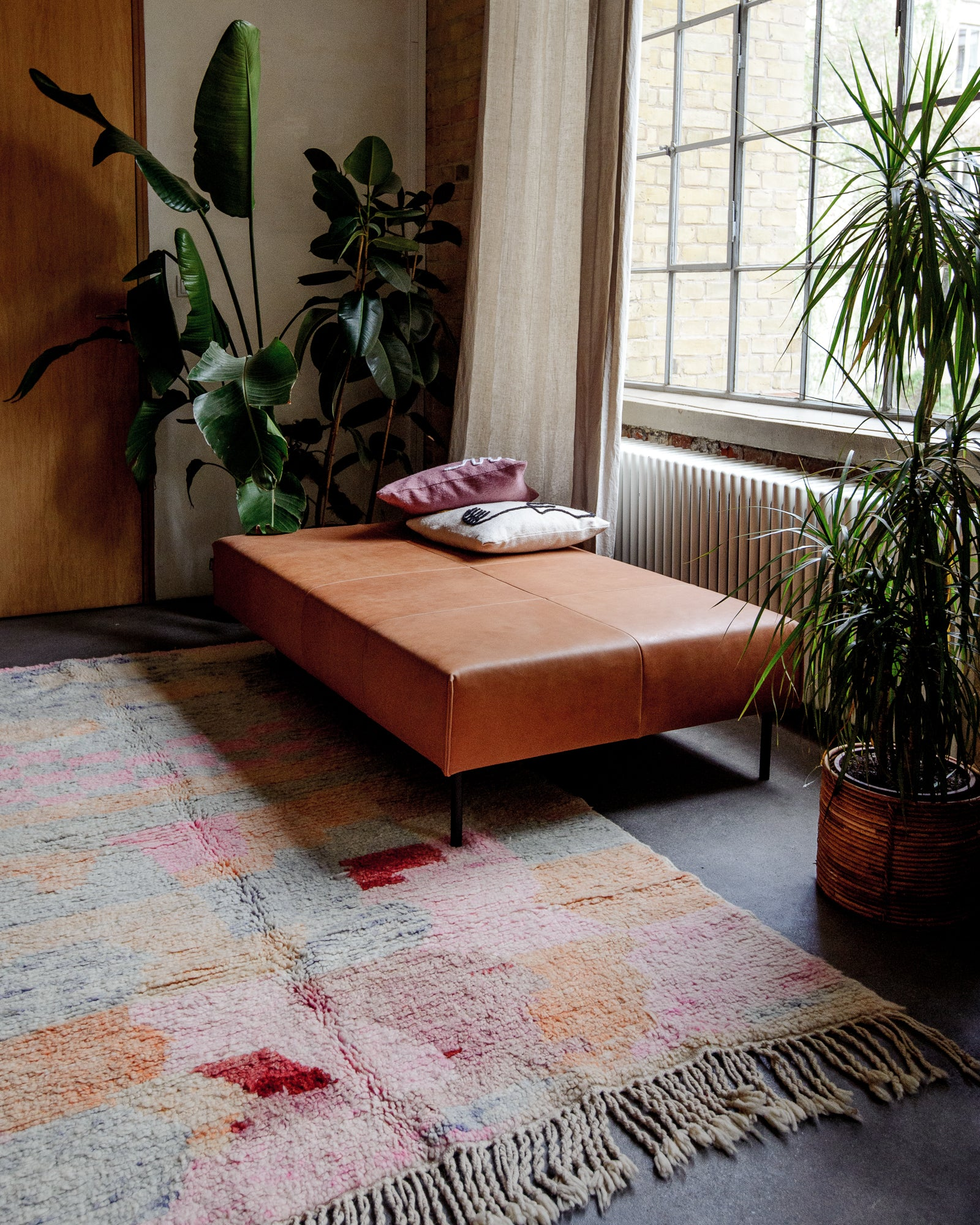
This more avant-garde style of carpet bypasses the more ordinary manufacture and weaving of Berber rugs as well as the use of traditional materials and raw materials such as wool, cotton, silk or goat's hair.
The Boucherouite rug, considered as a decorative object from "poor art", was born following economic, social and cultural changes in rural areas of Morocco. Nomadic herding is gradually giving way to sedentary agriculture and other more modern forms of employment. Wool used as raw material for the making of carpets for domestic use is thus becoming increasingly difficult to find.
It is therefore natural that the Boucherouite, which means "rag rug" in Arabic, makes its emergence. This Berber carpet is relatively recent since its manufacture developed in the 60s and 70s among the often very modest households of the Moroccan plains.
Focusing on the more unusual materials used to make these rugs, which, like traditional rugs, were produced for domestic use without any commercial intent, the Boucherouites reveal an incredible vitality and singular creativity. What often surprises is the contrast between the recycled textiles, the living colours chosen and the shabby materials used to make it. In fact, a gem of Berber art, the Boucherouite carpet is distinguished not only by its authenticity and esthetics, but also by the sincerity that emanates from it.












